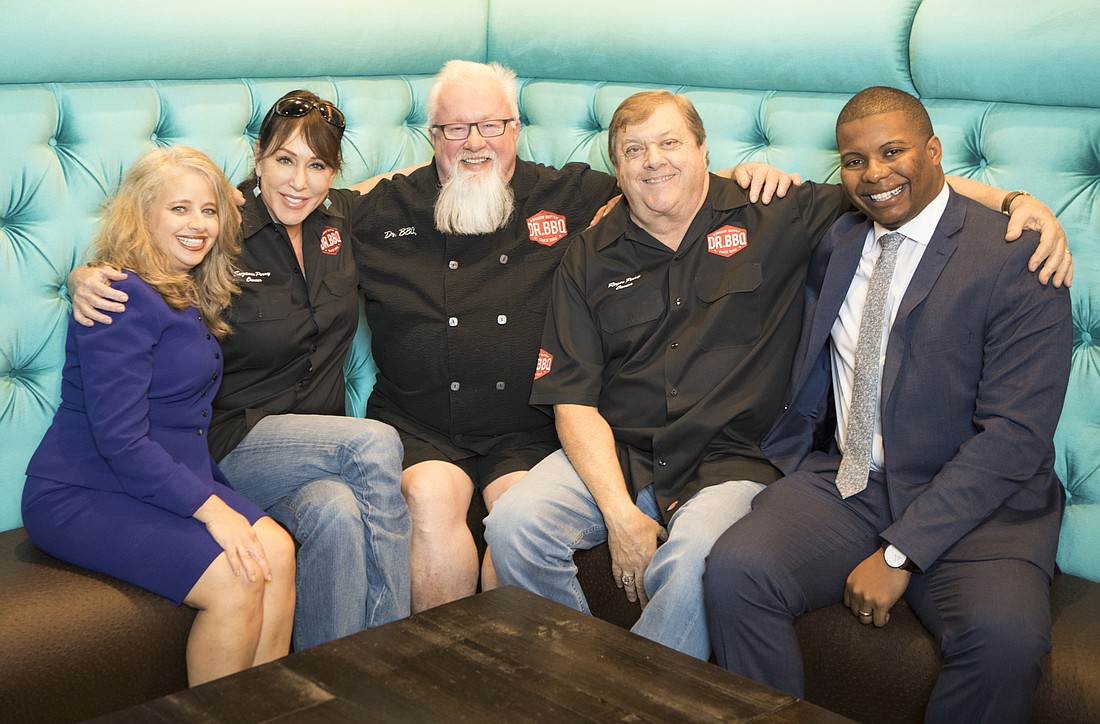- July 26, 2024
-
-
Loading

Loading

Americans love barbecue. Ribs, brisket, pulled pork — you’re never far from a smoke-filled barbecue joint. Dr. BBQ himself, Ray Lampe, says his favorite barbecue restaurant isn’t in a traditional mecca like Austin, Kansas City or Memphis, but in Brooklyn, proving the universal appeal of the cuisine.
“The restaurant industry tends to attract a lot of inexperienced restaurateurs who think it’s going to be an easy, lifestyle business.” Sterling Birdsong, SBA loan officer at Valley National Bank
But it takes much more than delicious food everyone loves to succeed in the fickle restaurant business. So when Lampe teamed up last year with Tampa Bay area restaurateurs Roger and Suzanne Perry to launch Dr. BBQ, an upmarket barbecue eatery in St. Petersburg’s EDGE District, he and his partners had to work hard to prove to their lender, Valley National Bank, that their ambitious, $3.3 million concept would succeed.
It helped that the Perrys had a solid track record of prior success in the industry. Another plus: Valley executives say the Perrys' deep understanding of marketing and financial projections inspired confidence.
“From a bank’s perspective, it’s a very risky market,” says Leslie Bridges, part of Valley’s Small Business Administration lending team. “There’s an ever-changing climate of what you have to do, and you have to be on top of it — all the time.”
Bridges and her colleagues on Valley's SBA team have developed something of a niche in lending to restaurants — despite the inherent risks. “The biggest thing, for us, is experience,” Bridges says. “You can’t make it up with collateral; you can’t make it up with reserves.”
A big reason restaurants have traditionally been a tough sell for banks, says Bridges’ SBA lending team colleague, Sterling Birdsong, is because even high-volume eateries tend to be low-margin businesses that don’t hold much intrinsic value. Restaurateurs often float debt and their physical assets depreciate quickly.
“It’s extremely tough to liquidate a restaurant,” Birdsong says. “There’s not a lot of collateral there, and trying to liquidate equipment dollar-for-dollar is never going to happen. So as a bank, you usually wind up taking a loss.”
Another challenge: Birdsong says the restaurant industry brims with broken dreams because people go into it for the wrong reasons and with the wrong mindset.
“The restaurant industry tends to attract a lot of inexperienced restaurateurs who think it’s going to be an easy, lifestyle business,” he says, “so they get into it not really knowing what it takes to run a restaurant — which is why a lot of them fail.”
The Perrys work hard to avoid that fate. Suzanne Perry, for example, focuses almost exclusively on marketing her and Roger’s group of restaurants, which also includes Datz, Dough and Roux in Tampa.
“Keeping up with technology, it’s like looking into a crystal ball,” she says. “I go to school for it — I have seminars coming up whose only purpose is on-demand food delivery. We need to constantly stay educated."
For Roger Perry, meanwhile, the cuisine itself is almost secondary. The restaurant industry is all about numbers — and understanding formulas for making them work in your favor.
Consider Dr. BBQ’s meat-heavy menu. “It’s not what you pay for it upfront; it’s what the yield is after it’s processed,” he says. “You’re going to trim some off; you’re going to cook some; there’s going to be waste. We figure for about a 45% yield from a single brisket.”
He adds, “If something costs you $5, you need to sell it for $15, because 30% is food cost and 30% is labor. What do you have left? Forty percent — that’s what pays the bills. If you’re not making that spread, you’re not going to be in business.”
Following Birdsong's mantra, Roger Perry says he didn’t get into the restaurant industry for the food. Too many people view restaurant ownership as a hobby business, he says.
“People don’t necessarily own pet shops because they like dogs, cats or fish," he says. "‘Oh, I cook a good steak on my grill at home.’ That’s not a good reason to open a restaurant.”
Similarly, Lampe, the restaurant’s culinary director, has been writing cookbooks and making appearances as Dr. BBQ since 1982, but for decades he resisted offers from aspiring restaurateurs because he didn’t want to get involved in the business side of foodservice.
“Being successful in the restaurant business doesn’t mean you know how to cook good food,” he says. “That has so little to do with it. You need people like Roger and Suzanne who understand things like portioning. Chefs don’t generally know how to do that.”